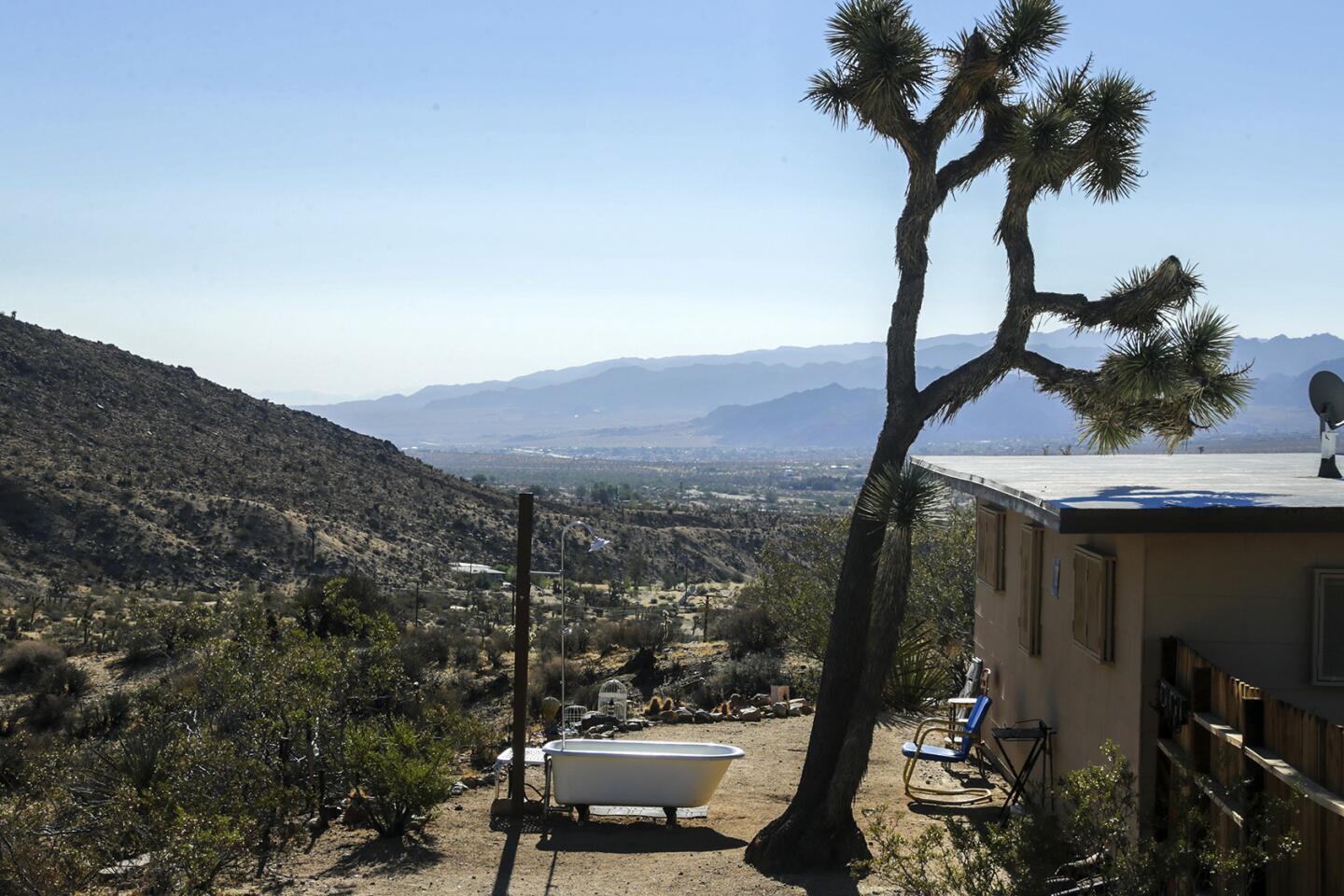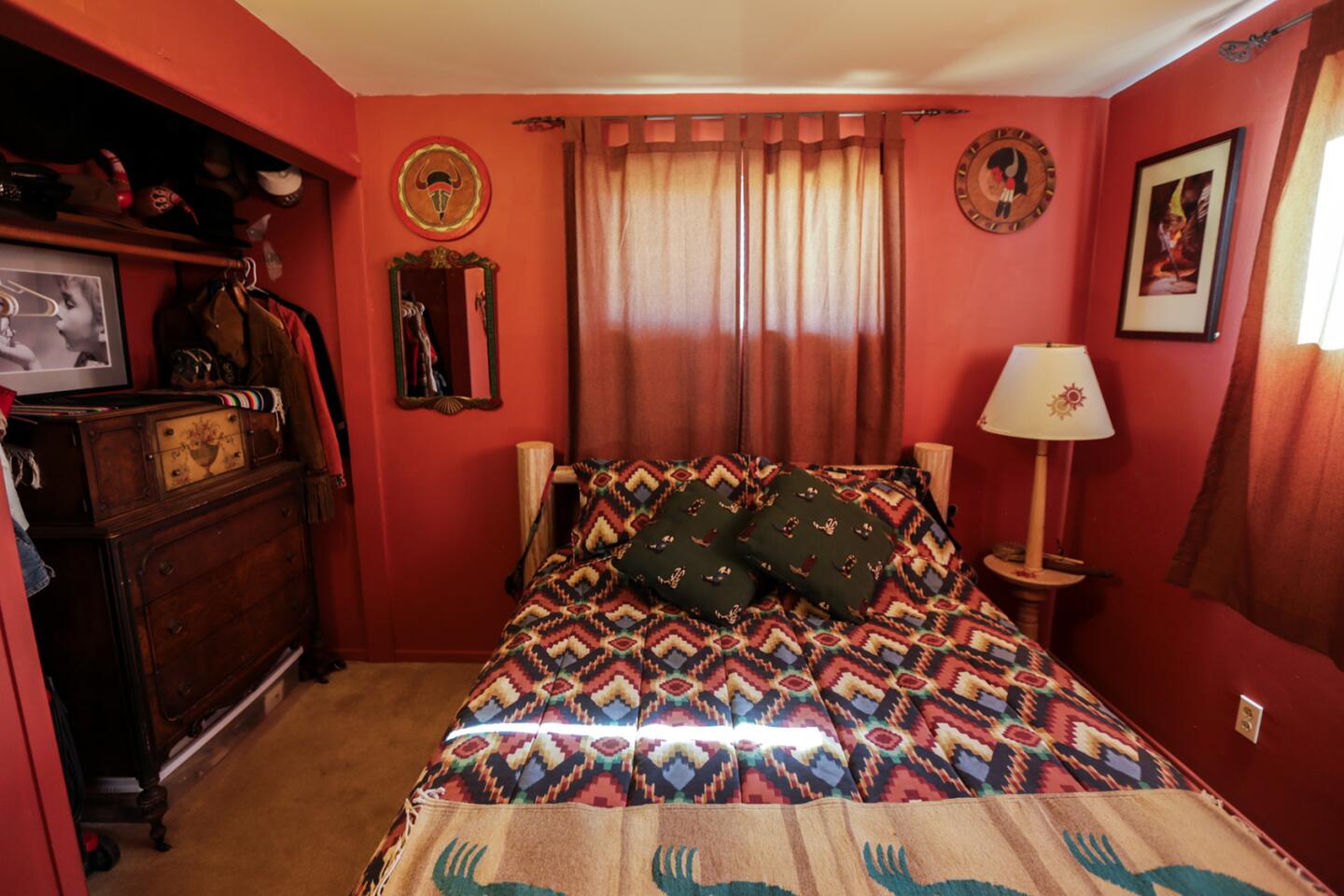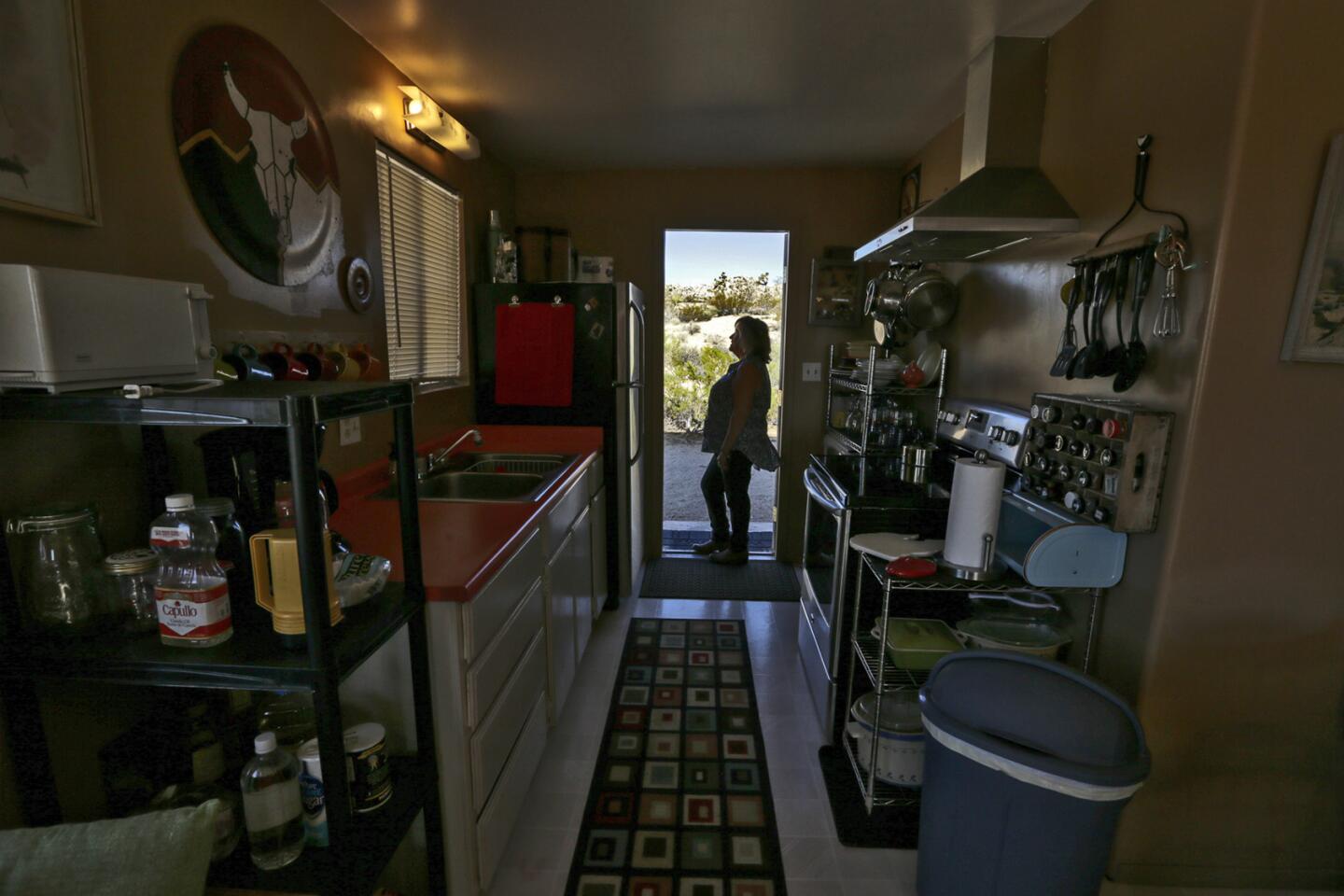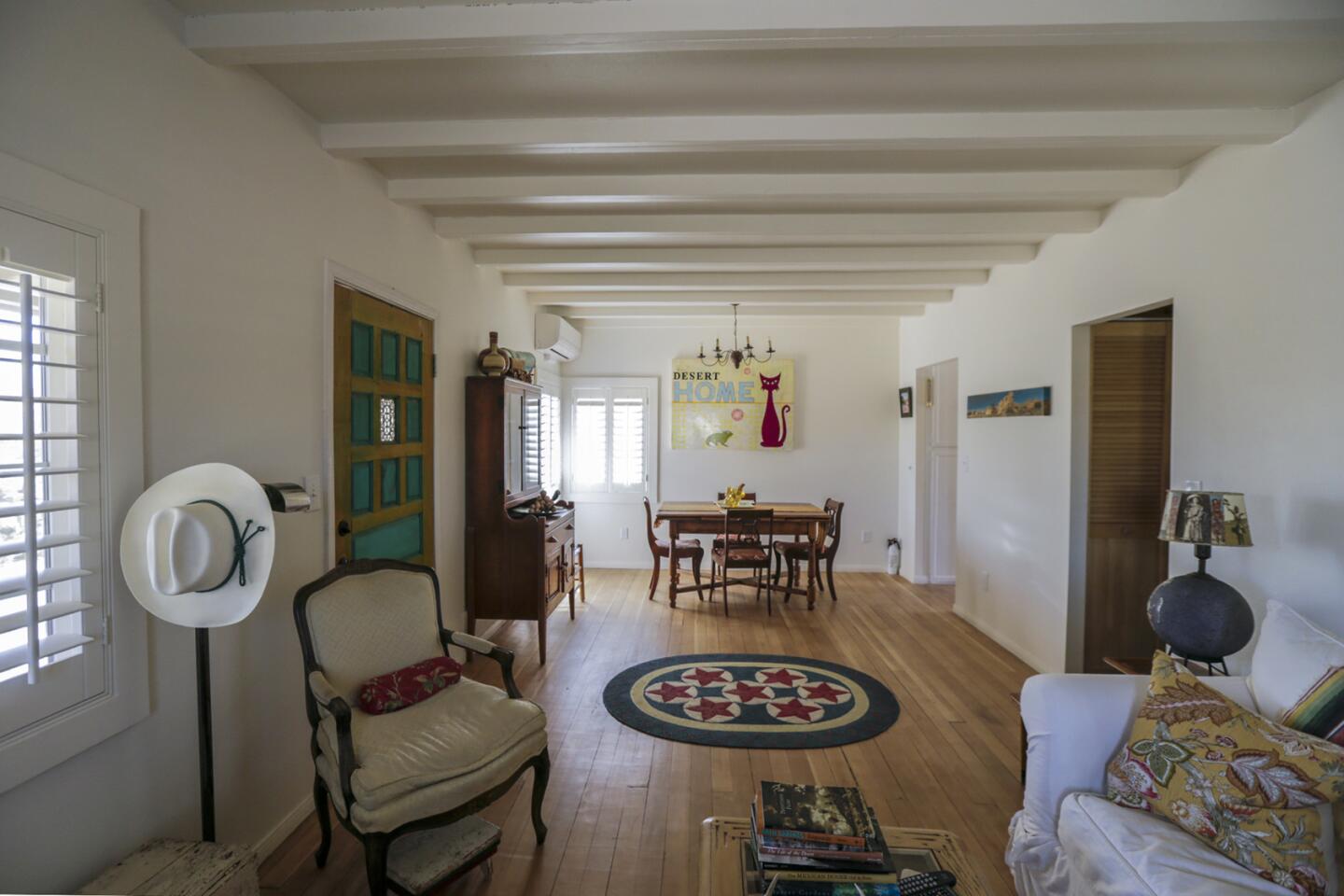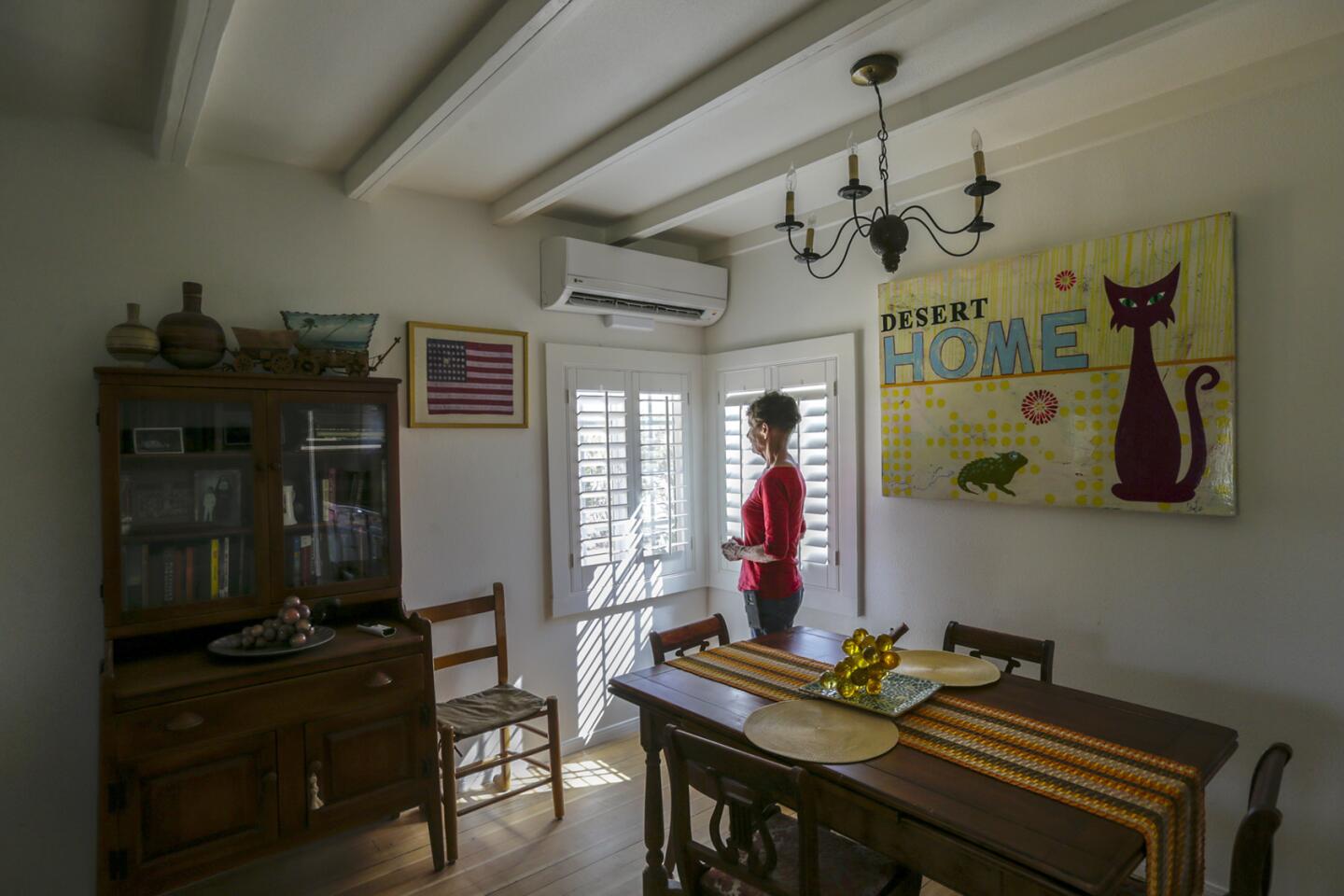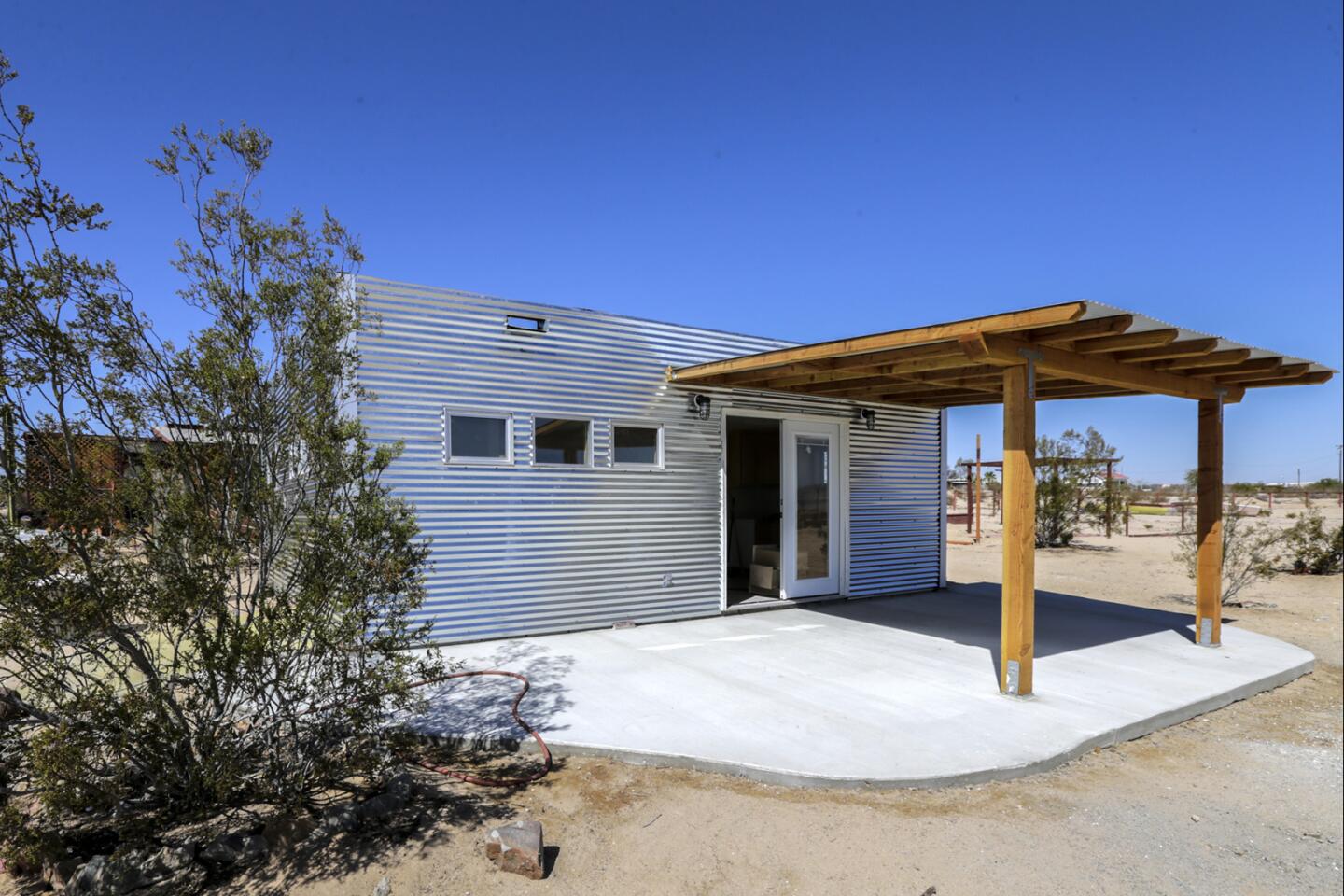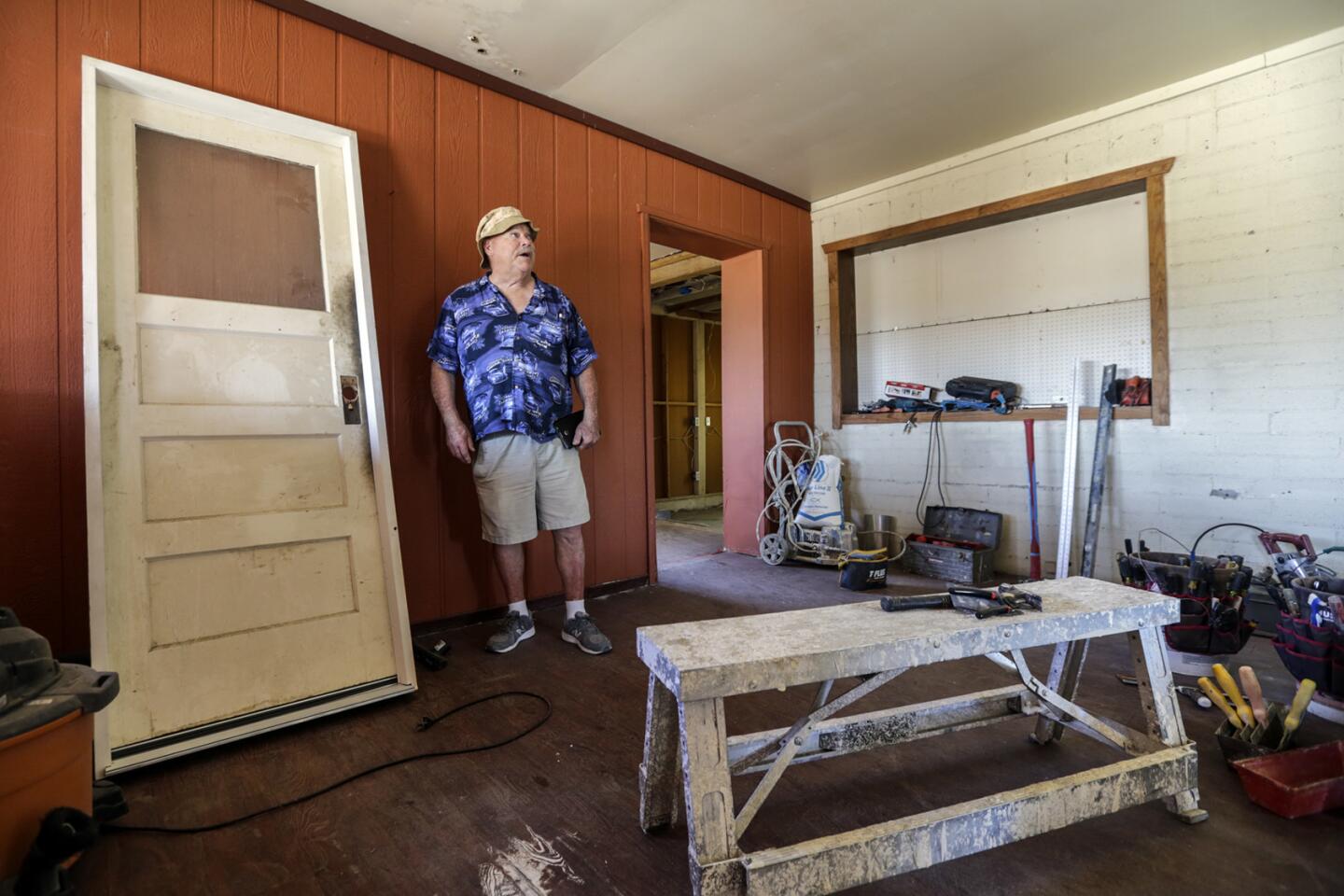Homestead cabins have become a cottage industry in the desert
- Share via
Anne Krieghoff thought her husband, Darryl, was out of his mind in 1991 when he suggested they buy a tiny, ramshackle homestead cabin in the Yucca Valley.
Like hundreds of other tiny desert shacks, the 660-square-foot house was the product of a 1930s-era government program to sell excess federal land at dirt-cheap prices. By the 1990s, many of the homestead properties were so dilapidated that local government agencies targeted them for razing.
“I thought it was a crazy idea,” Anne Krieghoff said. “It was a shell of a cabin. All of the windows were shot out…. He said, ‘I’ll have this fixed up in no time at all.’”
What Anne Krieghoff didn’t expect was that the sharing economy would turn these humble cabins into a cottage industry.
The two-bedroom home that the couple bought for $28,000 generated $14,000 in rent last year on Airbnb, the online short-term rental site. They rent it for $125 a night.
Airbnb lists more than 100 properties described as cabins in the Yucca Valley alone. Dozens more are listed in Twentynine Palms and other nearby communities. They range in size from a shanty no bigger than a one-car garage to two-bedroom homes with outdoor hot tubs, fire pits and covered patios.
The cabins rent for $69 to $150 a night, depending on the size of the building and the time of year. The owners have come up with kitschy names like the Sunset House, Wonderama Ranch, Cactus Adobe and the Lucky Dog Resort.
Cabin owners say the homestead properties are a thriving income source thanks to online booking sites that draw travelers looking for offbeat accommodations and experiences not offered at big chain hotels.
Alita VanVliet, an artist from Joshua Tree who bought two adjoining homestead cabins two years ago for $80,000, said the cabins are generating about $25,000 a year, even though she doesn’t rent them in the scorching summer months.
“They’ve definitely been profitable,” she said. “They’ve done better than I expected. If I put in air conditioning, I could even extend the season.”
Michael Figliolia, a retired New York lawyer who grew up in Twentynine Palms, bought two homestead cabins in the last two years. One of the homes was so packed with trash that he said the real estate agent thought he was nuts when he made an offer to buy it.
“I saw through all of that stuff,” he said. “The people who buy these cabins are visionaries. They know this place is going to explode.”
Most of the tiny cabins are on 5-acre parcels that were deeded by the federal government under the Small Tract Act of 1938, one of the last of the government’s homestead acts. The idea behind the program was to distribute 457,000 acres of desert in the western U.S. that the Bureau of Land Management deemed disposable. By the time the act was repealed in 1979, about 36% of the federal land was in the hands of private owners.
Under the federal guidelines, homesteaders were granted the land if they built a structure no smaller than 12 feet by 16 feet. That translates into a shanty nearly 200 square feet in size. The land was cheap, with some properties selling in the 1950s for less than $25 an acre.
But by the 1990s, so many of the small shacks were abandoned and became havens for squatters and mischievous teens that San Bernardino County officials launched a program, funded by a $500,000 federal grant, to demolish the most dilapidated of the buildings. The program — dubbed Shack Attack — paid to demolish 116 shacks, with property owners razing another 335 cabins at the behest of the county.
The San Bernardino County officials weren’t targeting all homestead cabins but only those that have become a nuisance or an eyesore, spokesman David Wert said.
“The county is certainly pleased that people who have these cabins are maintaining them and getting good use for them,” he added.
Many of the cabins — and the history they represent — have been in part because of the popularity of short-term rental sites such as Airbnb, VRBO and Homeaway.
“Part of the reason people use Airbnb is for a unique travel experience,” said Alison Schumer, a spokeswoman for the online booking site.
She noted that Airbnb’s most popular rental property is a dome loft in the Santa Cruz mountains. The loft, known as the Mushroom Dome Cabin, is in such demand that guests must make reservations six months in advance.
Millennials, who are most likely to use home-sharing sites, have little loyalty to major hotel brands and are more willing than older travelers to try something new and different, said Ben Cockerell, global marketing director for Crimson Hexagon, a social media analytics firm,
“It doesn’t surprise me that people are making a killing off of those cabins,” he said. “It is about the authenticity of that experience and its uniqueness. It’s difficult to replicate that experience anywhere else.”
This California desert town is experiencing a marijuana boom »
In the Southern California desert, the homestead cabins benefit from their proximity to Joshua Tree National Park, a 790,000-acre desert playground popular for rock climbing, bird watching and stargazing. Last year, the park drew 2 million visitors, a 25% increase from the previous year.
“We get all kinds of people,” Figliolia said. “We get people from Europe. We get movie stars. We get Internet people, from the dot-com industry.”
The peace and quiet of the desert is also a big draw, especially for artists and writers, said Dana Desselle, who buys and sells homestead properties in the Mojave and Sonoran deserts.
“The environment is so stunning to see,” said Desselle, who rents out two of her own cabins on Airbnb. “The nights are bright and starry. The way the light changes throughout the day is very seductive.”
The cabin that the Krieghoffs bought and overhauled with a cowboy theme stands at the base of a hill with a view of the Yucca Valley. A fire pit has been dug into one side of the property. Joshua Trees and creosote bushes surround the cabin, which they dubbed the “Lost Coyote Cabin.”
Last spring, Antony and Tina Van Couvering drove out to Twentynine Palms from L.A. to stay in Figliolia’s homestead cabin for a few days. Antony Van Couvering had just been fired as chief executive of an online business in Santa Monica and was looking for a place to start a new life.
He said he was charmed by the desert life, the starry nights and the serenity.
“The wilderness is a great restorative,” Van Couvering said.
The couple was so enamored that they moved to Twentynine Palms. They also bought a small cabin that they are fixing up to rent to other visitors.
“There’s a casualness of the life here,” he said. “From my window I can see for miles.”
To read more about the travel and tourism industries, follow @hugomartin on Twitter.
MORE BUSINESS NEWS
Study finds ‘pervasive and systematic’ issues of inequality in Hollywood
ITT Tech shuts down all its schools; one student says he’s ‘angry times 10 million’
Group calls for ending on-call and last-minute work scheduling
More to Read
Inside the business of entertainment
The Wide Shot brings you news, analysis and insights on everything from streaming wars to production — and what it all means for the future.
You may occasionally receive promotional content from the Los Angeles Times.
